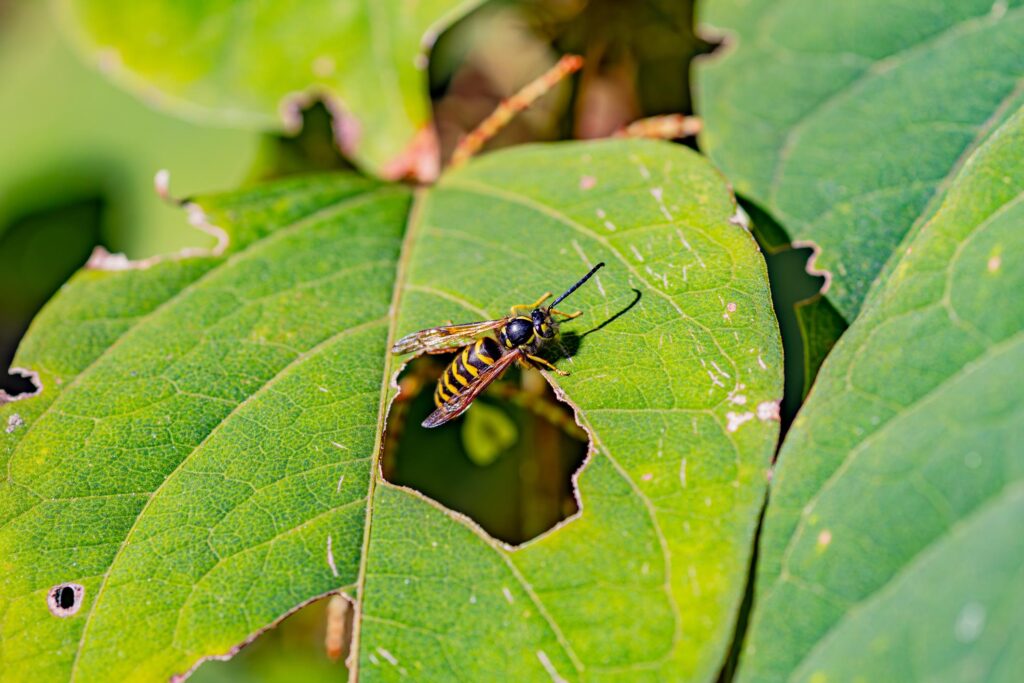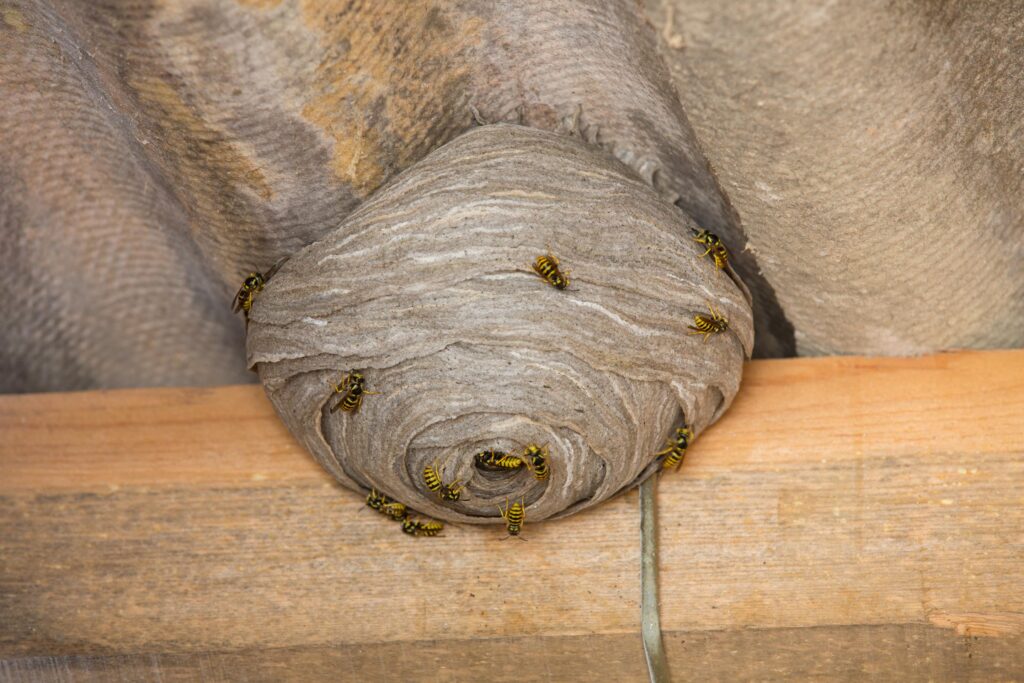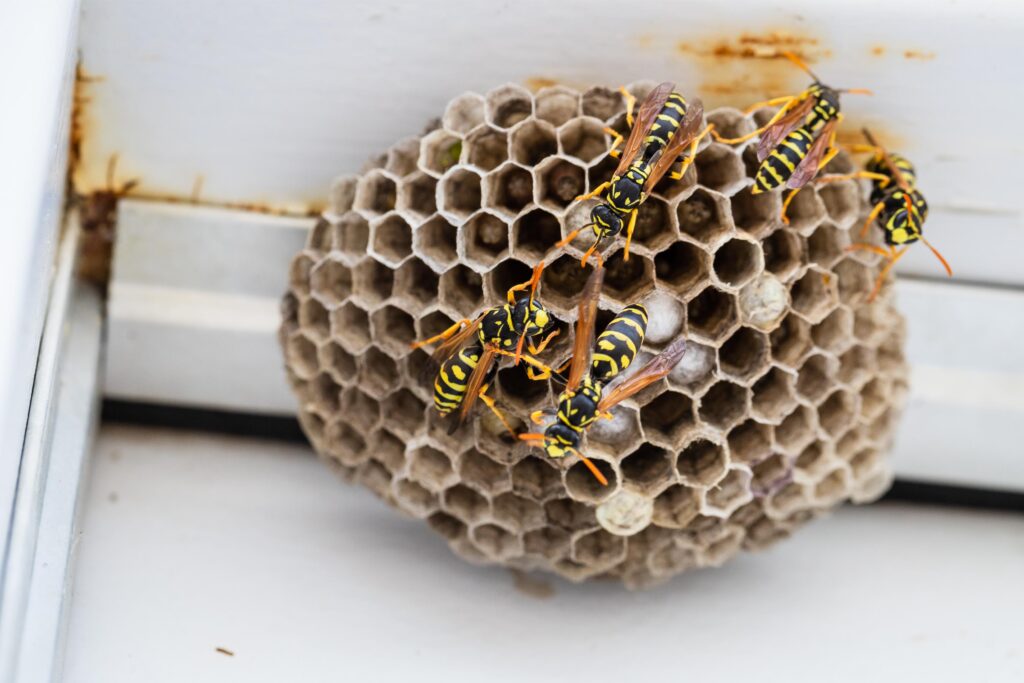One moment, you’re enjoying a quiet afternoon in the backyard. The next, a swarm of angry yellowjackets seems to appear out of nowhere. If you’ve ever experienced this, you know how quickly a hidden nest can become a serious threat.

Yellowjackets are more than just a nuisance. They’re aggressive, territorial, and capable of stinging multiple times. Unlike bees, they don’t die after they sting, and they’re not afraid to chase you if they feel their nest is under attack. That’s why being able to identify a nest before it becomes a problem is one of the best things you can do to keep your family safe.
Let’s take a closer look at how yellowjacket nests work, where to look, what warning signs to watch for, and how to deal with them—safely and effectively.
What Makes Yellowjackets So Dangerous?
Yellowjackets are a species of wasp that become increasingly aggressive as summer progresses. By late summer, their colonies are at peak size, and food sources become scarce. This shift in behavior often leads to more human interaction, especially during outdoor meals, trash disposal, or yard work.
What sets yellowjackets apart from other wasps and bees is their behavior. They’re extremely defensive of their nests and will attack in numbers if disturbed. For individuals with allergies, a single sting can be dangerous. For everyone else, multiple stings can still be painful and scary.
Where Do Yellowjackets Build Their Nests?
One of the reasons yellowjackets catch people off guard is that they don’t build the big, paper-like hanging nests you associate with other wasps. Instead, they prefer hidden or sheltered spaces that are hard to spot unless you’re looking closely.
They often nest:
- Underground, especially in old animal burrows or soft soil
- Inside walls, attics, or crawlspaces
- Under decks, stairs, or porches
- In dense shrubs or hedges
- Inside outdoor furniture or play structures

These nesting sites provide protection from predators, the elements, and, unfortunately, you.
How to Spot a Yellowjacket Nest
Because the nests themselves are often hidden, the easiest way to locate a nest is by watching the yellowjackets.
Start by keeping an eye out for concentrated activity. Suppose you notice several yellowjackets flying to and from the same area repeatedly, especially a hole in the ground or a crack in the siding. In that case, they’re likely entering and exiting their nest.
You might also hear faint rustling or buzzing inside a wall or ceiling, particularly during warm parts of the day when the colony is active. Some homeowners discover a nest only after hearing a strange hum coming from behind the drywall.
Another sign is behavior. If yellowjackets seem unusually aggressive or quick to “investigate” when you walk by a specific part of the yard, take that as a red flag. You may be near a nest.
What Not to Do
It’s tempting to want to deal with a yellowjacket nest on your own, especially if it’s small or you think you’ve caught it early. But yellowjacket colonies can expand rapidly and can house hundreds (or even thousands) of wasps by the end of the season.
Trying to spray a nest, block an entry hole, or dig up a ground nest without proper protection and training is a risky move. It almost always leads to stings and sometimes to a nest relocating even deeper into your structure.
DIY traps and store-bought sprays can help reduce the number of foraging wasps, but they won’t solve the real issue if a nest is well-established.
How to Protect Your Family
If you suspect there’s a yellowjacket nest on your property, keep children and pets away from the area until it can be inspected by a professional.
Here are a few extra precautions you can take:
- Don’t leave food or sugary drinks uncovered outside
- Keep trash bins tightly closed and move them away from gathering areas
- Seal cracks or gaps around your home’s foundation, vents, and siding
- Avoid swatting at yellowjackets—they release alarm pheromones when threatened
- Limit perfume or scented lotions when outdoors, as they can attract wasps
- Consider wearing neutral-colored clothing when gardening or working outside
Most importantly, reach out to a licensed pest control company to handle the nest. A professional team like Genuine Pest Control will assess the size and location of the infestation and use targeted treatments to remove the threat safely.
Long-Term Yellowjacket Prevention
Once the immediate threat is gone, you’ll want to take a few simple steps to keep yellowjackets from coming back next year.
In early spring, yellowjacket queens emerge and begin looking for nesting spots. That’s the ideal time to begin preventive treatment around your home. Pest control professionals can apply protective barriers around common entry points, and you can stay alert for early activity by inspecting high-risk areas like eaves, sheds, and the underside of decks.
Landscaping also plays a role. Trim back shrubs and ground cover near your home, and eliminate any rodent burrows or piles of organic debris that could invite nest building.
You Don’t Have to Deal with Yellowjackets Alone
Discovering a yellowjacket nest can feel overwhelming, especially when you have kids, pets, or just want to enjoy your yard without worry. But you’re not on your own.
At Genuine Pest Control, we’ve helped homeowners across the region detect, remove, and prevent yellowjacket nests with fast, professional service. We take safety seriously, and we make sure every treatment is tailored to your property’s unique layout and environment.
Think you’ve spotted a yellowjacket nest?
Don’t risk a sting. Contact Genuine Pest Control for expert inspection and removal services and reclaim your backyard with confidence.
